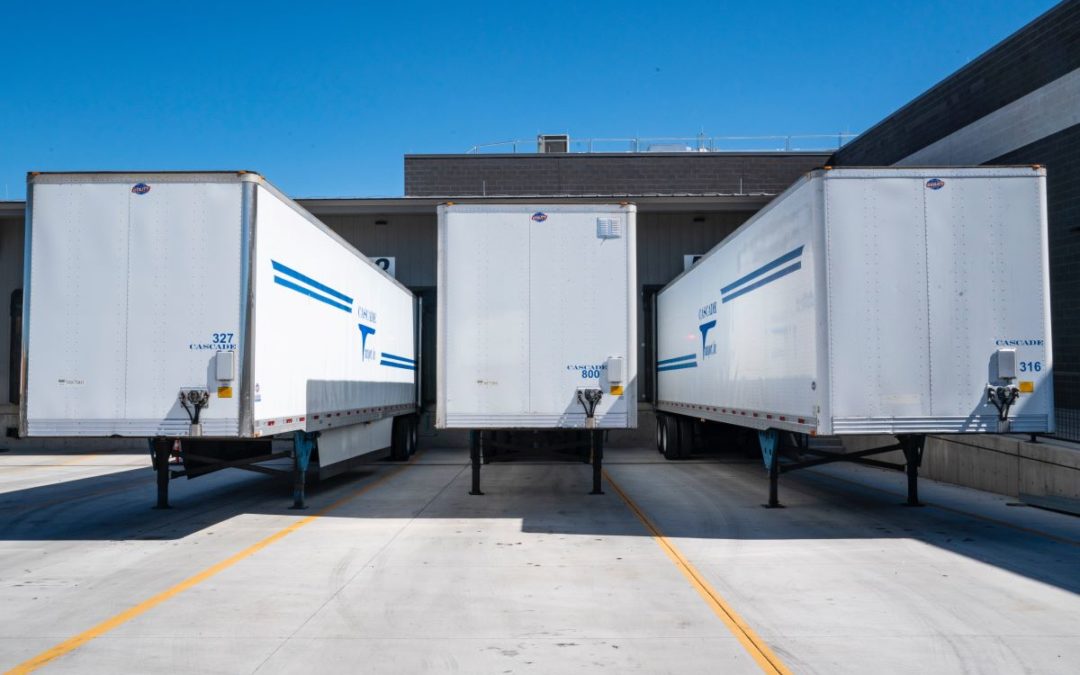
Dec 30, 2022 | Blog
Debating whether to use 3PL or 4PL can be challenging because only a few business owners know the difference. While both services may appear interchangeable, there are key differences in technologies, capabilities and typical applications.
If you want to introduce 3PL or 4PL into your supply chain management strategy, this guide will outline the major differences and how to choose the appropriate solution.
Logistics Terminology Explained
Whenever a customer purchases a product online, logistics providers become responsible for shipping them. Below are the different logistics services and what they offer.
First-Party Logistics (1PL)
First-party logistics (1PL) companies employ in-house freight carriers that transport goods and products from point A to point B. A 1PL transaction involves two parties: a manufacturer and a buyer.
For instance, a local farm (point A) might transport ingredients directly to a grocery store (point B).
Second-Party Logistics (2PL)
Second-party logistics (2PL) transport goods using owned assets, such as planes, boats or other vehicles. 2PLs are typically used in international shipping and wholesale goods.
For instance, a local farm might use an outsourced delivery service to ship ingredients to direct buyers.
Third-Party Logistics (3PL)
Third-party logistics (3PL) outsources delivery and additional services, including picking, packing and shipping. Some 3PL fulfillment services also offer warehouse management capabilities, such as real-time tracking, through connected software.
For instance, a local farm might use a 3PL solution to pack and ship goods, then deliver them to grocery stores more quickly.
Fourth-Party Logistics (4PL)
Fourth-party logistics (4PL) covers all supply chain management, including execution. 4PL providers, also known as lead logistics providers, act as consultants, giving the company feedback to improve operations.
For instance, a 4PL company might inform a local farm of changes in supply and demand, allowing them to make the necessary adjustments.
Fifth-Party Logistics (5PL)
Fifth-party logistics (5PL) or logistic aggregators employ highly advanced solutions – such as robots, automation, blockchain and Radio Frequency Identification (RFID) devices – to improve efficiencies within a company’s entire operation.
For instance, the same local farm might outsource all its logistics operations, focusing solely on production.
What Is a 3PL?
A 3PL, or third-party logistics company, ships products on behalf of a client. 3PLs act as an intermediary but do not take ownership of the imported products. A company might hire a 3PL provider if its supply chain becomes too complex to manage natively.
The types of logistics services a 3PL provides can range from warehousing to packaging and freight forwarding. Asset-based 3PL services directly manage a company’s resources to perform its services.
What Is a 4PL?
A 4PL, or fourth-party logistics company, controls a business’s entire supply chain strategy and has comprehensive oversight of warehouses, freight forwarders and shipping companies. A fourth-party logistics provider can make recommendations regarding changes to production and shipping strategies.
Hiring a 4PL company might make sense if you need more resources and staff to oversee transportation and other supply chain operations.
Differences Between 3PL and 4PL
While businesses have more hands-on involvement with a 3PL provider, there is an extra degree of separation with a 4PL provider. In addition, the relationship between companies and 3PLs might be more transactional than with 4PLs.
Below are other key differences between 3PLs and 4PLs.
Order Fulfillment
While 3PLs oversee fulfillment operations like warehousing, packing and shipping, 4PLs take it further by managing all supply chain activities. This includes transportation services, supply chain software and potential stopgaps in your process.
Supply Chain Optimization
Working with a 3PL can give your business the upper hand in supply chain optimization. 3PLs demand more client involvement, so you can still make the decisions you feel is best for your business. For example, you can optimize fulfillment by picking strategically located fulfillment centers close to your customers.
In addition, 3PLs provide clients with access to shipping data, increasing demand forecasting accuracy and enabling better-informed decision-making.
Storage Capacity & Delivery Footprint
Compared to 3PLs, 4PLs have a more extensive warehouse network, better storage capacity, and broader geographical coverage. In addition, 4PLs can store heavier items and provide more accurate lot tracking.
Financial & Operational Scalability
3PLs typically run more expensive than 4PLs because they demand longer-term contracts to cover daily order volumes. Not only do 4PLs run cheaper, but they also offer more flexible and scalable contracts – 4PLs are on-demand, charging clients only for the resources they use.
Customer Communications
Because 4PLs act as a business’s intermediary, all customer queries run through them before reaching you. This can cause significant delays.
Conversely, 3PLs work directly with merchants, allowing them to resolve issues quickly. Plus, 3PLs deploy the same customer service teams for businesses and merchants, which helps everyone stay on the same page and on top of customer demands.
Integrated Technology
While 3PLs can provide comprehensive warehouse management, they rarely offer the kind of advanced technology that a 4PL can. While both 3PLs and 4PLs use integrated warehouse management software (WMS), 4PLs often take their technological capabilities further with autonomous vehicles and robotics.
How the 3PL Process Works
While no two 3PLs are identical, these logistics service providers typically offer the following services:
- Transportation: 3PLs transport goods from warehouses to buyers. Occasionally, they might tap shippers like UPS, USPS and FedEx.
- Fulfillment and distribution: If necessary, a 3PL provider will manage warehouse operations, including storage, inventory tracking, rates and shipping strategies.
- Finances: 3PLs that provide cost control can lower freight forwarding rates. Financial 3PLs are more common with larger enterprises.
Advantages of 3PL
A third-party logistics service provider can make your supply chain more cost-effective and efficient. Below are a few other benefits you can reap from hiring a 3PL:
- Reduced operational costs: Outsourcing your logistics operations to an outside party is significantly cheaper than hiring an in-house team. You can pay for work as it is completed and invest more in core business processes like marketing and sales.
- Optimized space: If your warehouse is too small to stock all your inventory, hiring a 3PL eliminates the need to pay for a larger space. Instead, you can finance the space you need and scale as necessary, improving your business’s cash flow.
- Minimized inefficiencies: With the appropriate technology, 3PLs can increase speed and efficiency while reducing errors. By automating information transfer, your logistical operations become more accurate.
- Industry expertise: A reliable fulfillment provider has ample knowledge of the logistics industry and how best to reduce costs, increase savings and give your business a competitive edge.
Disadvantages of 3PL
3PLs may not be suitable for all businesses, as they can pose the following considerations:
- Forfeited control: Trusting a third-party fulfillment provider could be difficult, as you have to give up full control of the delivery process. In addition, guaranteeing a positive customer experience is challenging because you lack direct oversight.
- High upfront costs: Because most 3PLs adhere to a long-term strategy, investing in their services can be incredibly costly upfront.
How the 4PL Process Works
The goal of a fourth-party logistics service provider is to oversee your entire supply chain. To do so, it typically provides the following services:
- Transportation: A 4PL service will move your finished goods to one or more 3PL warehouses for distribution.
- Inventory management: 4PLs employ technology for real-time inventory tracking and provide better data visibility for merchants.
- Shipping: Most 4PLs provide last-mile shipping, which involves transporting packages from fulfillment centers to their final destination.
Advantages of 4PL
There are many reasons you might choose a 4PL company instead of a 3PL. Below are a few advantages that might convince you to hire these transportation providers:
- Comprehensive supply chain solution: With a 4PL, you’ll get a single point of contact for all your transportation and operational needs. Your business can eliminate inefficiencies and avoid wasteful logistical practices.
- Improved customer connectivity: While giving up control of your consumer management process can be daunting, hiring a 4PL provider can drastically improve customer satisfaction. 4PLs can increase engagement and answer queries from your target audience.
- Advanced technology: In contrast to 3PLs, 4PLs employ more advanced automation technology like robotics and integrated software.
Disadvantages of 4PL
Despite its bells and whistles, 4PL fulfillment isn’t always the solution. Here are a few cons to look out for:
- High dependency: Because 4PLs play a critical role in your daily operations, transitioning out of one can be extremely difficult. Think about a 4PL as your strategic partner before entering a long-term contract.
- Expensive: Compared to 3PLs, 4PLs may not be appropriate for small business budgets.
3PL vs 4PL: What’s Best for Your Company?
Whether a 3PL or 4PL is best for your company will depend on your business goals and current capacity. While 3PLs are eCommerce companies’ most common logistics model, there are also many reasons to choose a 4PL.
For instance, 4PLs can provide excellent logistical solutions for your supply chain if your business is on an enterprise level. On the other hand, newly expanding businesses can benefit from delegating their fulfillment responsibilities to 3PLs with logistical experience.
Key Takeaways
Both 3PLs and 4PLs provide significant advantages that can increase sales, improve your ROI and encourage business growth. However, your choice will depend on your business’s unique requirements. Before you make a decision, remember these key takeaways:
- There are five types of logistics services: 1PL, 2PL, 3PL, 4PL and 5PL. Each model introduces new intermediaries.
- 3PLs follow one of the most common logistics models, providing transportation services and some warehouse management. They are ideal for growing businesses that need to focus on other operational aspects, such as marketing and sales.
- 4PLs provide a more comprehensive solution for enterprise-level businesses that want to delegate fulfillment tasks. They are most appropriate for established companies that are ready to develop a franchise.
- The core difference between 3PLs and 4PLs is the level of logistic services they provide. While 3PL allows for direct communication between merchants and buyers, 4PL creates a second degree of separation that tends to make businesses more dependent on its services.
For a warehouse management solution you can always rely on, ShipHero has the answer for you. With over 99% shipping accuracy and 30% faster delivery speed, we can significantly reduce your warehousing costs and increase picking efficiency threefold.
Learn more about our warehouse management and outsourced fulfillment solutions today.
3PL vs 4PL FAQs
Is 4PL better than 3PL?
Whether 4PL is better than 3PL depends on your business needs. For enterprise-level businesses with more complex logistics processes, 4PL may be more appropriate.
What is an example of 4PL?
An example of 4PL is a logistics company that manages a merchant’s entire supply chain, from logistics to order fulfillment. While a 3PL will only be in charge of fulfillment and delivery, a 4PL will also handle communications between merchants and buyers. For instance, if a buyer is running out of a particular product, a 4PL will inform the merchant that they need to start producing a new batch.
What services does a 4PL offer?
While they differ from provider to provider, some services that a 4PL could offer include:
- Transportation
- Warehousing and storage
- Picking and packing
- Distribution and order fulfillment
- Last-mile and same-day delivery
- Optimized inventory placement

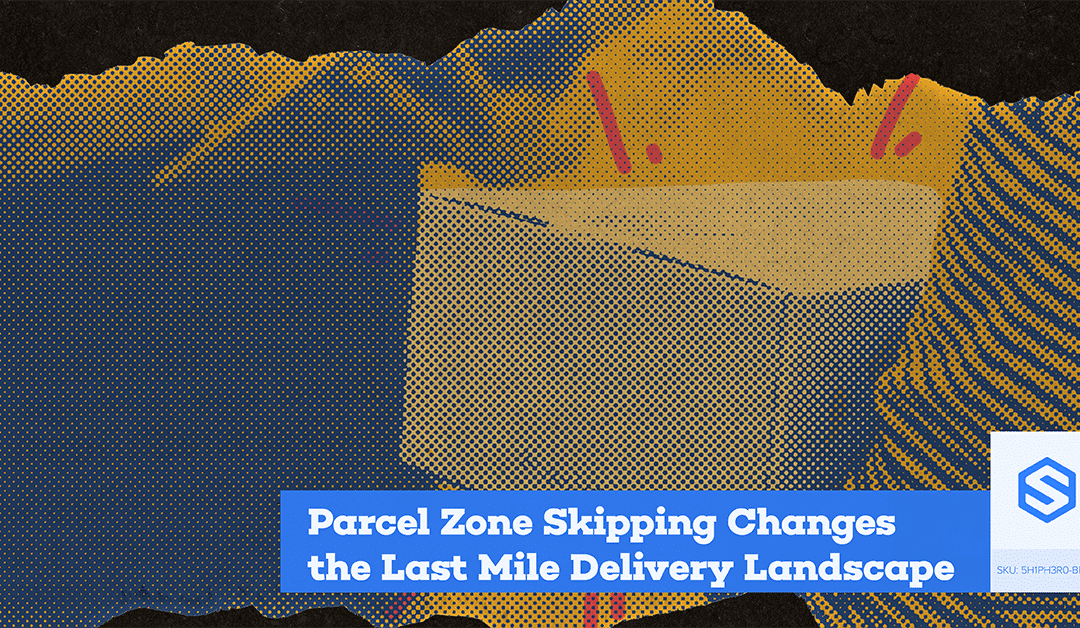
Jul 1, 2022 | Blog
One of the important lessons learned from the recent supply chain upheaval has been that the old ways of logistics just aren’t sustainable. Everything from inventory management to customer experience is being looked at with a fresh set of eyes, looking for solutions that can keep deliveries flowing while giving customers a reason to come back for more.
A key point of frustration for eCommerce brands has been the heavy price of cross-country shipping. With products sent to customers all over the world, packages make multiple stops at different warehouses and distribution centers, all with their own rates and processing fees. As the item approaches its final destination, these expenses start to stack up, potentially driving away sales to competitors with cheaper shipping rates.
Rising shipping costs show no signs of slowing down, and eCommerce brands eagerly seek out new ways of getting their products from point A to point B in a way that’s reliable and cost-effective. With all the pressure to find alternate delivery methods, some brands have adopted parcel zone skipping as a way to reduce the cost of last mile shipping.
What are Delivery Zones?
Delivery zones are the geographic areas a carrier ships packages. Typically, the more zones a package passes through, the higher its shipping cost.
While the general structure of shipping zones is similar across carriers, they aren’t the same for every delivery. A package’s origin is designated as Zone 1, with the zone numbers increasing as the delivery destination gets further away. For example, if you shipped an item from San Francisco to St. Louis, San Francisco would be considered Zone 1, and St. Louis would be considered Zone 7.
This is why online brands can provide benefits like free shipping to customers in their warehouse’s immediate area. Without the need to pass through any outside distribution centers, shipping costs can remain low. When sending parcels across the country, however, delivery zones can become a hurdle when trying to keep up with customer expectations and competitor prices. That’s why so many brands are looking into zone skipping as a more affordable fulfillment strategy.
What is Zone Skipping?
Rather than shipping individual parcels, zone skipping involves consolidating your many ready-to-mail packages into a single truckload, then sending the shipment to a specific zone as one. From there, the individual items can be distributed to customers at a closer proximity, with the shipping cost reflecting only one delivery zone.
If you’re sending products from California to customers in New York, you can send the items directly to the New York area. Customers then pay for shipping in a single zone, instead of paying for a cross-country shipment.
By sending an entire shipment or orders to a single zone, you avoid the financial burden of multi-zone shipping. For brands struggling to keep up with the low-cost shipping options offered by competitors like Amazon, zone skipping presents a distribution method that can provide an avenue for a lower cost of shipping.
Not only does this lower the price for your customer, but the closer your items are to their doorstep, the quicker they’ll be able to arrive. Since the order is already in the customer’s delivery zone, they can expect the parcel to arrive in a matter of days.
When to Consider Zone Skipping
While zone skipping is a great way to get products to customers quicker and for a smaller price, it might not be an ideal solution for every eCommerce brand. Let’s take a look at when online retailers should consider zone skipping as a feasible fulfillment strategy.
Cross Country Shipments
If you’re regularly sending orders to customers on the other side of the continent, zone skipping offers clear opportunities to help your brand excel. However, if your primary customer base exists locally, or is just a zone or two away, sending orders to that delivery zone might not be worth the investment.
To determine if zone skipping is the right choice for your brand, you’ll need to calculate the cost of shipping grouped packages combined with the expense of delivering each product to its destination. If that amount is less than sending each item individually, then zone skipping might be worth looking into more.
Large Order & Product Volume
For zone skipping to make financial sense, you’ll need to ship enough products to fill an entire container. If you haven’t built a substantial enough customer base in the zone you’re shipping to, you might be paying to move products that will just sit on a shelf.
However, if your order volume isn’t high enough to justify a full semi-trailer, carriers might be able to accommodate a pairing of your shipment with another brand. By consolidating the two shipments, the container can be filled enough to make the trip cost effective. This service might not be available with every carrier, so it’s important to check whether zone skipping is possible with your specific shipping partner.
Product Tracking Capabilities
One of the major disadvantages of zone skipping is that it makes tracking packages a little more complicated. Since you’re sending items to another location before their final distribution, your carrier might not be able to provide the most accurate information about when the delivery is likely to be completed.
That’s why it’s important to have quality reporting and visibility tools in place before you opt for zone skipping. That way, you and your customers will never be left in the dark when it comes to where products are on their delivery journey.
Conclusion
Parcel zone skipping keeps the cost of shipping low while cutting down on delivery time. This dual advantage has made it one of the more popular fulfillment strategies as brands continue to grapple with supply chain challenges.
If your online store has a cross-country customer base with a high order volume, parcel zone skipping might be the shipping solution you’re looking for.
If you’re looking for a fulfillment partner to help optimize your delivery process, contact the Fulfillment Experts at ShipHero today.

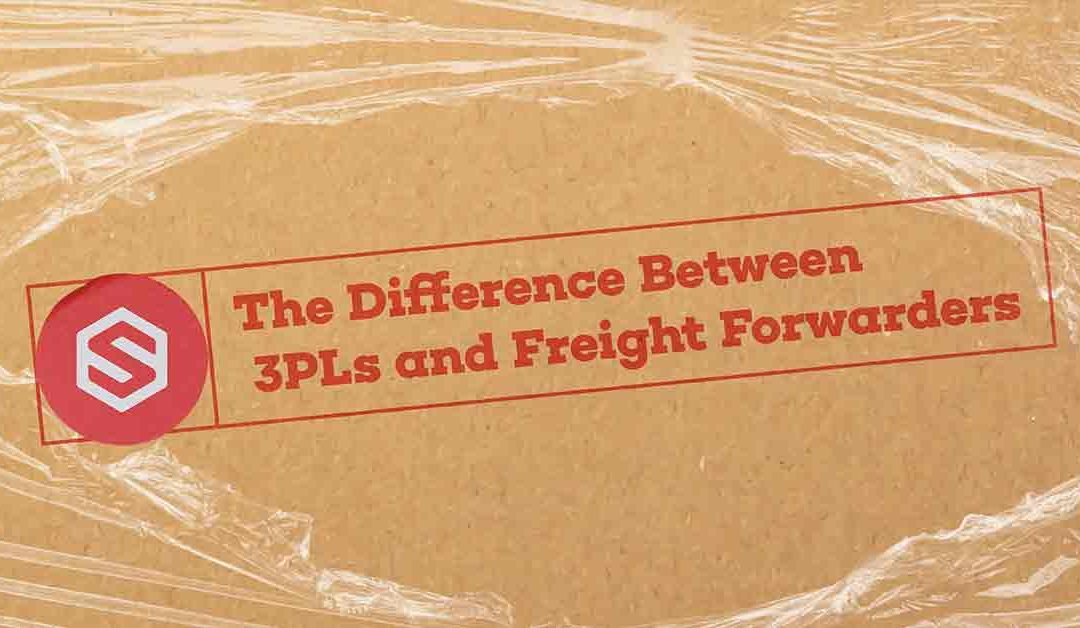
Nov 26, 2021 | 3PL Warehouse Management, Blog, Fulfillment
The pandemic has added words to our vernacular that many people had never heard before. Terms like supply chain, freight forwarding, 3PL, last mile and fulfillment are now much more familiar to the everyday consumer than they’ve ever been. However, as often happens with industry-specific verbiage, that doesn’t always mean the definition or understanding of these terms is widespread.
eCommerce shipping is a current hot button issue, forcing many people to spend more time thinking about how the products they buy actually make it from a factory in China to a shipping container to a US port to a warehouse to their front door. While this is part of the supply chain, two very specific types of businesses are more involved than ever – 3PLs and freight forwarders – and it can be hard to keep them straight … even for those who work in the industry.
Below is a breakdown of the differences between third party logistics (3PL) companies and freight forwarders, as well as an understanding of when a company might choose one type over the other.
Freight Forwarding Defined
A freight forwarder is typically a company that manages moving products from one place to another. They typically are a non-asset company that doesn’t manage trucks or drivers or any port workers – they manage the details of where a shipment is, where it can get loaded onto a ship, plane or truck, and how it will get transported to a warehouse for fulfillment and distribution.
The major benefit of a freight forwarder is that they can negotiate better rates with shipping companies due to the volume of product they’re moving. By working directly with carriers, freight forwarders can broker better rates than eCommerce companies often can on their own.
They can also work to coordinate shipments that might need multiple types of transportation throughout the journey, such as land to sea to land to air.
Freight forwarders also have a deep understanding of customs,imports and exports. These are the areas of shipping that typically have the most red tape and can easily trip up a newer or smaller eCommerce organization that doesn’t have previous experience with these issues or simply doesn’t have the bandwidth to manage these details.
Freight forwarders are also very familiar with every type of possible transportation, including sea, air and ground. Due to the breadth of their client base, they need to have a solid understanding of how to move any product for any company from anywhere in the world.
Third Party Logistics (3PL) Company Defined
A 3PL is an organization that can manage a few different processes. While a freight forwarder is strictly responsible for forwarding freight, a 3PL might be in charge of one, two or all of the following:
Services could include: LTL (less than truckload), FTL (full truck load) services, rail, air, ocean and/or trans-modal
- Warehousing & Fulfillment
Services could include: receiving, inventory management, returns, eCommerce fulfillment, B2B fulfillment, inspection, and/or kitting
A freight forwarder can be considered a 3PL, too. Sometimes a freight forwarder also operates their own warehouses, but often still work with fulfillment centers like ShipHero to manage the B2C shipments
Yes, you read that right, it is possible for a freight forwarder to be considered a 3PL. In the end, it depends on how much of the logistics process they own – if a freight forwarder manages their own warehouse then there’s a good chance that they offer warehouse management services like pick, pack and fulfillment. This puts them more at the level of a 3PL, than just a freight forwarder.
The true value of a 3PL lies in their warehouse and fulfillment capabilities. They are equipped to handle eCommerce fulfillment duties from receiving to DTC to returns to storage. By outsourcing these tasks to a third party logistics company, eCommerce retailers are free from the worry of warehouse leases, employees, hiring and dozens of everyday tasks that are necessary to run a business that don’t impact the bottom line.
How to Choose Between a Freight Forwarder & a 3PL
The biggest question for most eCommerce retailers is how to choose between a freight forwarder and a 3PL. In general, there are a few scenarios that lend themselves more to one than the other. Here are a handful of situations to look for when choosing.
- You are only concerned with getting your inventory from one location to another.Maybe you’ve recently secured product that’s stuck somewhere in Canada and you need it in Michigan. In this instance, using a freight forwarder would be the perfect choice. Best option: Freight Forwarder
- You need to get your inventory shipped from China, into a warehouse and then shipped to consumers. This is a pretty perfect situation for a 3PL. They have the processes in place to manage shipping carriers, receive and putaway your inventory and pick, pack and ship your orders. Best option: 3PL
- You’ve acquired some inventory but it’s not enough to justify the cost of an entire shipping container. Freight forwarders can save money by combining different clients’ orders into one container. Since they have access to a variety of inventory locations and clients’ different needs, it should take them no time at all to organize the shipment and get it where you need it – normally for less than you expected. Best option: Freight Forwarder
- You’ve increased advertising for your product on the West Coast and now have a lot of orders pouring in from Washington State. Your current warehouse is in Maine – so this is creating a problem. Working with a 3PL will alleviate this issue in no time. Depending on size, most 3PLs have more than one warehouse and work to maximize your inventory distribution to keep shipping costs and times down. Best option: 3PL
Choosing between a freight forwarder and a 3PL is really about the long-term. If you are looking to forge a relationship with a logistics company that will act as a partner, and manage your fulfillment process from start to finish, you’re really looking for a 3PL. If you’re looking for a more transactional relationship that you may only use once or twice a year, then a freight forwarder will work.
As we continue to move through 2021 and into 2022 there is no doubt that the shipping game will continue to evolve. The more you know about your options, the better choices you’ll make.
If you’re new to ShipHero Fulfillment, please schedule a meeting today with our experts to learn more about how we can help you get your orders picked, packed and delivered with our fulfillment service. No setup fees, simply pay as you go. ShipHero works to ensure that organizations invest in the solutions that match their needs, to improve productivity, revenue, and success.
Click HERE to Schedule a Meeting Today
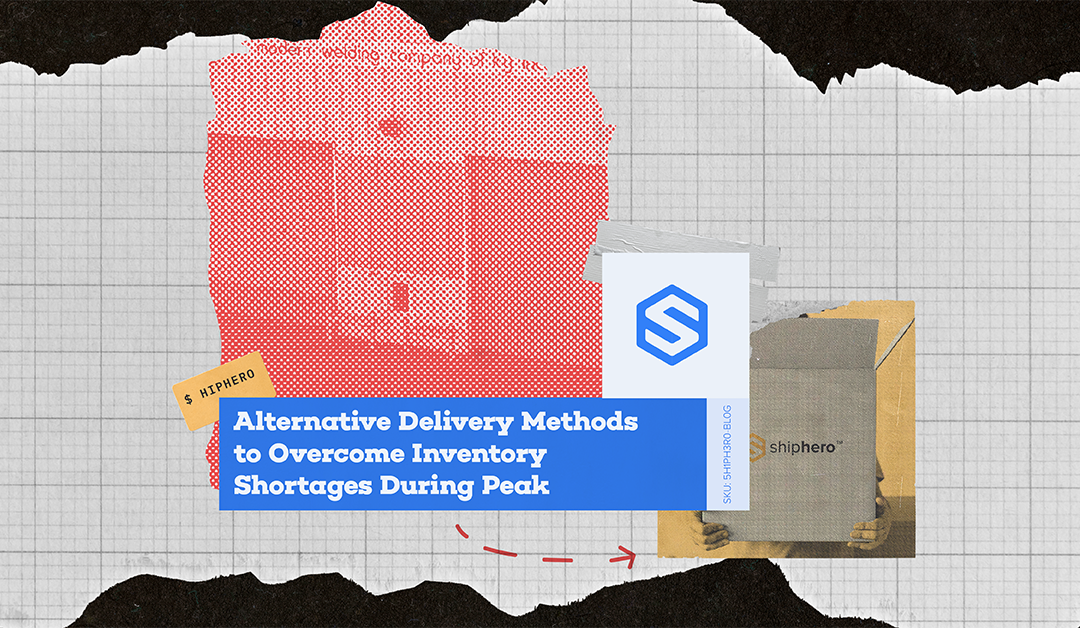
Apr 8, 2022 | Blog
As the logistics world gears up for another peak season, brands are looking back on last year’s shortfalls to determine where there’s room for improvement, or experimentation, with how products are shipped.
While the supply chain remains strained by the rapid growth of online orders, new methods and technologies have emerged that help simplify the complicated world of fulfillment and shipping.
According to GoShippo.com, 56% of retailers identified the cost of shipping as their number one challenge. As inventory shortages and delays persist, keeping these costs under control could give your brand the upper hand against competitors. Let’s take a look at some of the benefits of alternative shipping options and fulfillment technologies to see how they can keep you ahead of the curve this upcoming peak season.
Micro Fulfillment Centers
From the onset of COVID-19, inventory shortages and warehouse bottlenecks have become a major burden for eCommerce brands. Without the ability to get products to their customers in a timely manner, retailers face the possibility of falling behind on sales and missing an opportunity to scale.
The rapid expansion of online shopping has led to online retailers renting out additional fulfillment centers to accommodate the growing number of orders.
In an effort to shorten delivery times, or eliminate them entirely, many brands have turned to converting existing warehouse space in closer proximity to their customers. These micro fulfillment centers, or MFCs, are typically located in urban centers and provide more flexible delivery options. Brick and mortar store fronts with extra room in the back have become extremely valuable for brands seeking to cut down on last-mile logistics.
In addition to quicker delivery, MFCs also facilitate the option of in-store pick ups, giving nearby customers the ability to bypass the delivery process entirely. Not only does this provide a more satisfying customer experience, but also works to cut down on the workload of your warehouse and carrier operations.
Utilizing New Warehouse Technology
While partnering with reliable and innovative carriers is important for efficient shipping, those deliveries are only as dependable as the warehouses they’re shipped from. It might be tempting to invest in new integrations to get your small business shipping back on track. But the best supply chain solutions might come from focusing on the factors you can directly control inside your fulfillment center.
Robotics
One of the most common barriers to scale for eCommerce brands is the price of labor, and those costs continue to increase as online shopping becomes the norm. For a sustainable fulfillment operation that can handle a growing pool of customers, many brands have invested in warehouse robotics.
With this new technology automating some of the more time consuming aspects of fulfillment, your existing warehouse staff gets increased capacity to focus on the timeliness and accuracy of orders.
While robotics might come with a high upfront cost, avoiding shipping errors and inventory shortages commonly brought on by manual fulfillment processes can be valuable for long-term and sustainable growth.
Outsourced Fulfillment Service Providers
For an alternative supply chain solution, a top-tier fulfillment service provider might be the answer. With inventory shortages slowing down deliveries, a proper shipping 3PL can help your brand stay ahead of those issues before they impact consumers.
In addition to a smoother buying experience, the secure estimates of inventory and delivery times that a high-visibility fulfillment provider can provide highlights where your fulfillment operation is falling short. This added awareness is essential to building an optimized delivery process that can handle an influx of orders during peak shipping season.
Inventory Management Strategies
Inventory shortages have become an unfortunate reality for eCommerce brands in recent years. No matter the size of your company, what products you offer or how many customers you work with, peak season can quickly put a strain on your fulfillment operations.
Let’s take a look at some of the strategies brands have adopted to stay on top of their inventory levels and work around shortages before they can spoil the customer’s buying experience.
Avoiding Overselling
Inventory shortages can mean big trouble for emerging eCommerce brands. This common issue limits the amount of sales you’re able to make. It can also turn away potential customers due to lack of supply, and they might be less inclined to return to your store in the future.
Peak season, although it may be challenging, offers an opportunity to build greater trust between you and your customers. By prioritizing visibility in your warehouse, you’ll be able to flag out-of-stock items on your site, or alert customers when inventories are low before they begin the purchasing process.
Allowing Room for Scale
Opening up your brand to multiple channels lays a solid foundation for scalability. By integrating with multiple eCommerce channels, such as Amazon, Shopify, Etsy and others, you increase your capacity for an expanding customer base while providing those customers with the ability to make purchases using the platforms they prefer.
In addition to opening up these new sales channels, prioritizing automation in your fulfillment processes can allow your brand to scale while curbing inventory issues before they arise. Outdated workflows like offline spreadsheets, unintegrated tools and manual tracking just can’t provide the efficiency and flexibility that’s required for a modernized supply chain.
Prioritize Visibility
Once you’ve opened your brand to new sales channels and optimized your warehouse, it’s essential to keep tabs on all facets of your business to identify potential shortfalls in delivery and inventory management.
A major visibility issue brands run into has to do with integrations. If you’re working with multiple data and carrier platforms, a lack of alignment between these tools can make it difficult to understand true inventory levels, leading to confusion for both you and your customers.
Conclusion
Inventory shortages and congested supply chains might be the new norm for eCommerce brands, but that doesn’t mean those problems can’t be solved. With the emergence of alternative delivery methods like micro fulfillment centers and new warehouse optimization tools, your brand is faced with an opportunity to rethink how deliveries are made and be better prepared when peak season rolls around again.
If you’re looking for a partner to help your eCommerce scale to new heights, contact the Fulfillment Experts at ShipHero today.
Click HERE to Schedule a Meeting Today
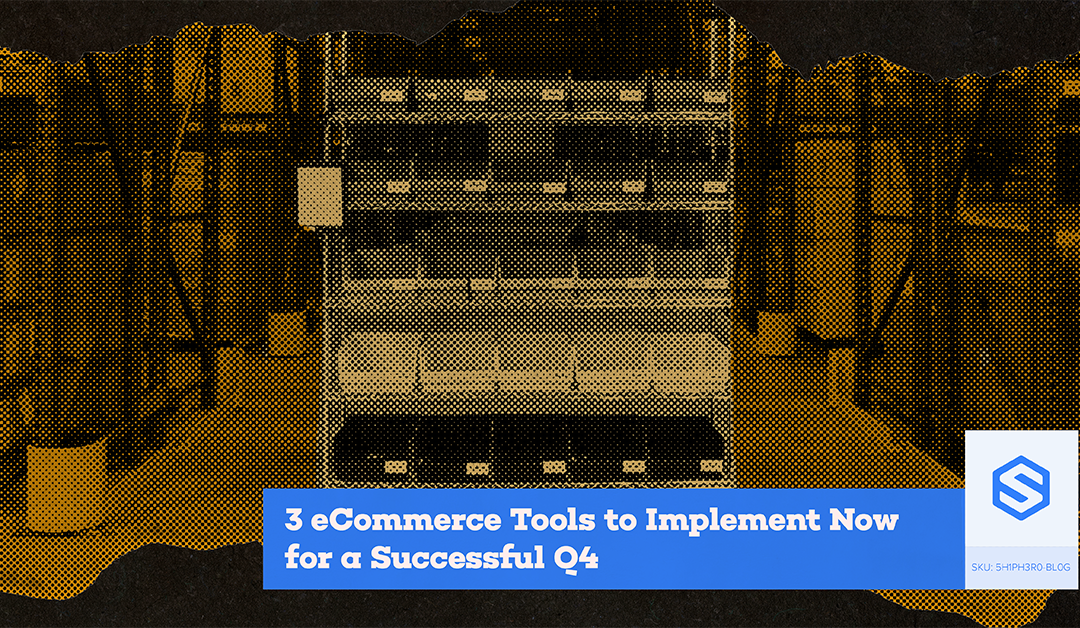
Apr 22, 2022 | Blog
In order to stay competitive in today’s supply chain environment, brands need to constantly innovate and reevaluate their fulfillment tools to decide whether they have what it takes for a successful Q4.
With the online shopping’s busiest season quickly approaching, now is the time to take a look at your brand’s fulfillment strategy and decide where there’s room for improvement. By investing in warehouse automation solutions, flexible storage strategies and data warehouse tools, competitors are working hard to ensure this peak season runs a little smoother than the rest.
Here’s a look at three essential tools to help boost your eCommerce brand in preparation for Q4.
Automation in the Warehouse
Warehouse robotics might sound like a heavy investment, but even small-scale automation tools can increase the efficiency and accuracy of your fulfillment center.
In recent years, more fulfillment centers have begun to install cost-effective warehouse robotics like sorting and bagging equipment, automated label printing and wearable technology that boosts the productivity of a warehouse.
One of the most common and accessible types of warehouse automation is known as collaborative robots. The process of identifying an order, walking to its storage location, picking it from the shelf and returning it to the packing station takes up considerable time. As the name implies, collaborative robots work alongside your existing staff to handle some of these repetitive and time consuming tasks. Since they’re customizable to fit your fulfillment center’s specific needs, these machines are designed to scale as your eCommerce brand continues to grow.
According to Automate.org, the use of collaborative robots is expected to rapidly expand as fulfillment centers seek out better ways to lower labor costs while finding a flexible automation solution. If the layout of your warehouse changes, or you need to switch locations, collaborative robots can change right along with it.
With this new warehouse technology taking over the picking, labeling and shipping aspects of fulfillment, your staff will be ready to handle the increased demand for accuracy that comes with Q4.
Smart Warehouse Storage
In order to compete in today’s online marketplace, eCommerce brands are actively seeking out ways to minimize the time it takes to fulfill orders and get products shipped faster. Part of this approach involves reevaluating the layout of your warehouse and how it can best be organized.
It might sound like a large task, but leveraging data to reorganize an existing warehouse is worth it in the long run. Adopting strategies like automated slotting and optimized storage practices shorten the amount of time it takes for your staff to locate an item and kick off the shipping process. For example, storing your best selling products closest to your packing stations can make a huge impact over time. With warehouse workers no longer traversing the facility for a single product, they can stay focused on the crucial task of ensuring accuracy and efficacy of their shipments.
As retail giants like Amazon continue to mold consumer expectations, some emerging brands have also turned to micro fulfillment centers as a way of keeping up the pace.
Traditionally, online retailers have used a single warehouse to fulfill all of their orders. Handling all of your fulfillment from a single location might be an affordable solution in the short term, but once Q4 arrives and orders begin to spike, that warehouse can quickly become overwhelmed.
Micro fulfillment centers involve renting underused warehouses and extra retail space to provide shippers with an advantage when peak season rolls around. In addition to increasing the amount of available inventory space, micro fulfillment centers shrink the distance between distribution centers and the end customer.
Modernized fulfillment service providers can also help shorten delivery times by leveraging their multiple locations and customer data. ShipHero, for example, with our 7 North American warehouses, moves your products as close as possible to your customers before they even place an order.
Once the order is made, the item’s last-mile shipping time is significantly reduced, providing a better buying experience for your customers.
Reporting & Visibility Tools
One of the most important tools you can implement for Q4 is something that ensures you’ll have an understanding of what’s going on inside your warehouse. A clear picture of your existing inventory, order capacity and demand on your staff allows you to anticipate delays before they impact the consumer, giving your brand a leg up when peak season bottlenecks become a possibility.
Data warehouse tools that facilitate reporting and visibility can come in a few different forms. If you’re handling fulfillment on your own, having a quality warehouse management software, or WMS, backing up your operations is essential. With a reliable WMS, you’ll be able to properly examine the rate of incoming orders, shop for the best carrier rates and replenish your stock for an optimal fulfillment strategy when things get busy.
If you’re outsourcing your fulfillment, on the other hand, it’s important to partner with a third party that prioritizes visibility for their customers. Fulfillment service providers like ShipHero, that provide detailed warehouse reports, tracking information for each order and flexible integrations are built to take on the shipping process during peak season while keeping you in the loop. Based on the reports you receive from your dependable fulfillment partner, you’ll be better equipped to make decisions about investment, replenishment and improvements with consistent support from fulfillment experts.
Conclusion
Over the past few years, the expansion of online shopping during Q4 took the supply chain environment by surprise. Overburdened warehouse staff and shipping lane bottlenecks posed new challenges for eCommerce brands looking to get ahead during the most crucial part of the year.
Implementing new features like warehouse automation, micro fulfillment centers and visibility tools can give your brand the support it needs to triumph in Q4, while providing flexible and scalable solutions for the next challenges that the supply chain has in store.
If you’re new to ShipHero Fulfillment, please schedule a meeting today with our experts to learn more about how we can help you get your orders picked, packed and delivered with our fulfillment service. No setup fees, simply pay as you go. ShipHero works to ensure that organizations invest in the solutions that match their needs, to improve productivity, revenue and success.
Click HERE to Schedule a Meeting Today

Apr 28, 2022 | newsroom
Landed costs can be a heavy burden on eCommerce brands. In addition to shipping and carrier costs, import fees and taxes can make it difficult to stay competitive and keep up with customer expectations.
With offers like free shipping and overnight delivery becoming the industry norm, shippers are seeking out creative ways to cut costs and appeal to the growing pool of online shoppers. One of those methods involve moving single shipments across the northern border to cut down on landed costs.
Under Section 321, duty-free international shipping is possible. By importing products through Canada, this law allows shippers to avoid additional taxes and fees while continuing to provide speedy delivery for customers.
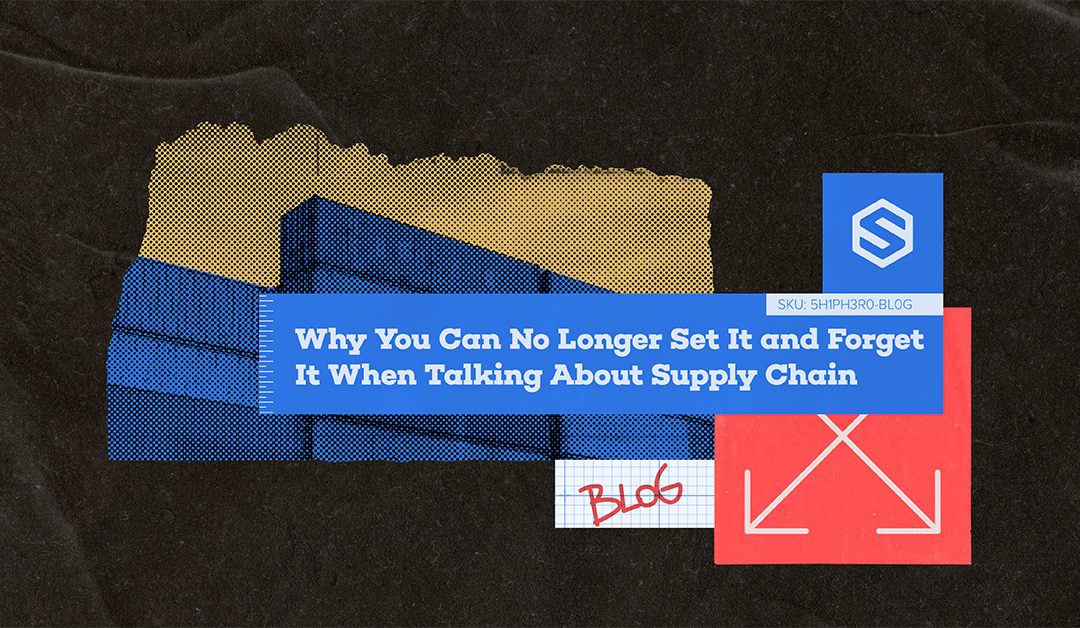
Apr 29, 2022 | Blog
Prior to COVID-19, brands built their fulfillment operations with the assumption that the status quo would last forever. Simply setting up a warehouse, working with a carrier and employing a well trained staff was enough to maintain timely delivery of products without much need to change.
If you’re reading this article, you probably know that assumption was wrong. Supply chain volatility, for better or worse, is now the norm. Traditional warehouses and their rigid processes no longer have what it takes to help brands thrive, driving warehouse operators to rethink how successful fulfillment can be possible under these new conditions.
While there is no single cure to every brand’s shipping struggles, many companies have adopted the overarching strategy of supply chain flexibility.
Supply chain flexibility
Supply chain flexibility refers to a fulfillment team’s ability to rapidly respond and adapt to a changing supply chain environment. One of the biggest lessons learned throughout Covid-19 is that traditional warehouses were not equipped to handle the influx of orders or shipping bottlenecks that quickly became part of everyday life. Responding to new levels of customer demand, raw-material requirements or limited staff bandwidth can seem impossible when the same warehouse processes have carried on for years without adjustment.
With the goal of supply chain flexibility and agility in mind, brands of all sizes have been busy rethinking how they can best serve their customers without the benefit of predictability or stability on their side. To overcome this hurdle, and to ensure warehouses are prepped for any future surprises, new warehouse technologies are being utilized to anticipate erratic market conditions.
Trends In Warehouse Automation
Every brand’s fulfillment requirements are a little different, and supply chain solutions that work for one company can look vastly different than the solutions of another.
Rather than finding a single tool or strategy that cures warehouse issues across the board, companies have tended to embrace a mix of tools that make day-to-day shipping a little less of a headache. Automated pick and pack systems, wearable technology and superior warehouse management software have risen to a new level of prominence as supply chain flexibility becomes more of a priority.
Automated Pick & Pack Systems
One way warehouses have minimized the physical demand on their staff is by investing in automated pick and pack systems, such as conveyor belts or collaborative robotics.
Conveyor systems, an affordable automation option, can really speed up the shipping process. Instead of walking to the item and then back to the packing station, your products can be automatically sent to the station of your choice. While this is a common practice in fulfillment centers, the large footprint and infrastructure requirements make conveyor systems less than ideal when aiming for a flexible supply chain.
Collaborative robots, on the other hand, provide a picking solution that can be altered at a much lower cost. Rather than spread out across the warehouse floor, these wheeled machines can be customized and instructed where to go and what to pick. If changes need to be made to the warehouse, collaborative robots are easy to reprogram and change.
The manual picking process is where a lot of mistakes can happen. These automation tools take the possibility of human error out of the equation, meaning no mis-ships and a happier pool of customers. With the superior reliability that comes with these adjustments, you’ll be able to guarantee order accuracy while saving money on correcting expensive returns.
Wearable Technology
Wearable technology in the warehouse has been around for a while, but never to the advanced level that we see today. Mobile label printing, smartphones and data capturing devices have removed the need for warehouse staff to be in a single location in order to stay connected and efficient. Now, workers can flow throughout the warehouse, completing multiple fulfillment tasks while on the move.
In a supply chain environment that demands flexibility, incorporating wearable technology can enhance the way your staff ships packages without changing much about the warehouse itself.
According to foodlogistics.com, integrating wearable technology doesn’t usually mean you’ll have to make changes to your warehouse’s layout. These tools can be highly customizable and can be programmed to fit most working environments.
However, some aspects of how you do fulfillment, such as data capture and software integrations, might need to be adjusted. Before deciding to move forward with these tools, it’s important to get a clear understanding of how it can fit into your existing processes and whether it’s compatible with the tools you already have.
Warehouse Management Software
Modern warehouse management software can do a lot more than just help keep you organized. Quality inventory management, data capture and seamless multi-tool integrations are now required for a better shipping experience, and the right WMS can help your brand get there.
A sophisticated WMS goes a long way when it comes to supply chain flexibility. For example, when a product’s demand spikes, a WMS can provide recommendations on optimal storage strategies and updated replenishment timelines so that you’re never caught off guard. Understanding how your customers behave and interact with your online store can also reveal new and efficient delivery options.
By integrating your online store, your carriers and any other online tools to a WMS, you’ll be able to drastically improve your ability to leverage data and open up money saving opportunities.
Conclusion
The supply chain might be a bit unpredictable at the moment, but by taking the steps to ensure your fulfillment center is adaptable, your brand can stay competitive despite abrupt changes.
With new developments in automation, wearable technology and warehouse management software, supply chain flexibility is attainable without making expensive changes to your warehouse.
If you’re looking for an agile fulfillment partner to help modernize your brand’s delivery process, contact the Fulfillment Experts at ShipHero today.
Click HERE to Schedule a Meeting Today
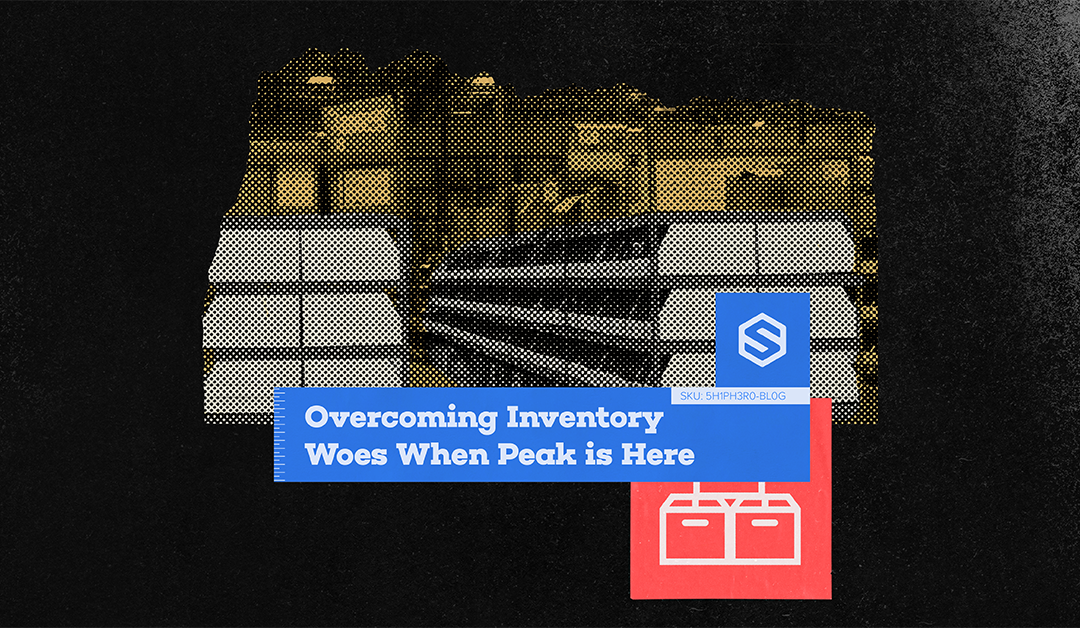
May 6, 2022 | Blog
The holidays are right around the corner, which means online shopping is once again set to spike, reminding eCommerce brands of the importance of inventory management.
Keeping customers happy during peak season is essential for long term success, and inventory management has quickly become a major hurdle standing in the way of that goal. Over-stocking unsold items, unexpected supply shortages and surging online orders can easily set you back and leave potential customers with no choice but to shop elsewhere.
Let’s take a look at some of the most common causes of inventory frustration during peak season and what strategies can help make Q4 a little easier to navigate.
Limited Warehouse Space
One of the root causes of inventory shortage is the scarcity of actual shelving space. Before peak season comes around, it’s important to understand your existing warehouse capacity and how an increase in orders could impact your product’s availability. Warehouse space is in high demand. Even during the slower shipping season, eCommerce brands have struggled to find adequate storage space for their products.
As this demand increases, so will the cost of reserving space. Even if you end up selling more during peak season, those gains could be offset by rising operational costs.
Difficulty Forecasting Orders
One of the toughest challenges of peak season is the ability to accurately forecast the amount of stock you’ll need to keep orders flowing. Due to the recent spike in online shopping, brands can generally anticipate an increase in warehouse output. Predicting exactly how much additional stock will be needed, however, can be much more difficult.
Accurate demand forecasting can be a major advantage during peak season. When it comes to inventory management, a clear idea of storage needs can help avoid problems like overstock and depletion. Before this year’s peak shipping season arrives, it’s a good idea to have a system in place that leverages data from previous years and gauges the amount of stock you’ll need to keep customers satisfied.
On-Demand Warehousing
One solution that has worked for some brands with inventory management issues has been on-demand warehousing. On-demand warehousing allows companies to temporarily rent excess inventory space to store products as needed.
While this strategy can help secure additional storage space, you might sacrifice some degree of visibility and control over how your products are shipped. The companies that provide the additional inventory space usually don’t complete the fulfillment process themselves. That step is outsourced to a 3PL, which could potentially leave you in the dark about the status of your orders.
On-demand warehousing 3PLs negotiate on your behalf with warehouses in their network to find the most efficient and cost effective storage solution for your brand. With the supply chain continuing to cause unexpected shipping interruptions, this gives you a flexible and customized inventory management strategy.
Just In Time Inventory Management
Rather than expand their inventory storage space, some brands have opted to leverage their existing warehouse by employing just in time inventory management.
Just in time inventory management, or JIT, is a strategy that involves importing goods to the warehouse as they are needed, minimizing some of the constraints of limited storage space. If an order is canceled, or certain products don’t meet the expected demand, those unwanted products won’t sit around the warehouse taking up valuable shelf space.
JIT can help make shipping more efficient, but it does open you up to some amount of risk if the day-to-day fulfillment process runs off track. A successful JIT strategy relies on accurate order forecasting, reliable suppliers and adequate staff training to keep the fulfillment cycle running smoothly. If a supplier falls behind and can’t get your products to the warehouse on time, you’ll be out of stock and unable to fulfill orders.
Real-Time Reporting
One of the most important tools to have on hand when peak season rolls around is data. Finding new efficiency opportunities and storage solutions is much easier with the ability to track all the facets of how your warehouse operates. The right warehouse management software can recommend slotting strategies and anticipate inventory shortages long before they impact the customer.
If you’re outsourcing your fulfillment with a 3PL, visibility is key. Traditional warehouses might not be equipped to provide real-time updates on inventory levels, so you’ll need a fulfillment partner that’s up to the task.
With the assurance of automatic updates from your fulfillment service provider, you can head into Q4 with full knowledge of when to replenish your stock.
Conclusion
Inventory management might be a challenge, but that doesn’t mean it has to hold back your eCommerce brand. With the right strategy, warehouse tools and 3PLs on your side, peak shipping season can be a profitable success.
If you’re looking for a shipping partner to help optimize your approach to inventory management, contact the Fulfillment Experts at ShipHero today.
Click HERE to Schedule a Meeting Today
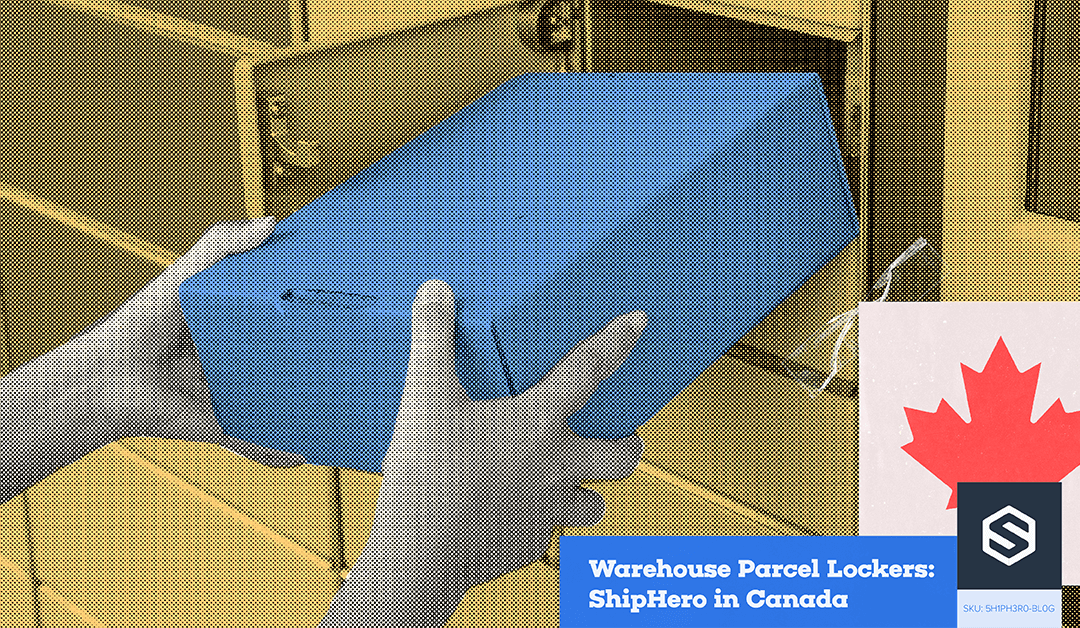
Jun 3, 2022 | Blog
As the average person’s shopping habits continue to evolve, so do the ways brands get products in their customers’ hands. The eCommerce industry has exploded in recent years, with companies constantly seeking out affordable, creative and effective ways to stand out from the competition while offering a convenient buying option.
The option to buy online and pick up instore, known as “BOPIS,” has allowed brands with brick-and-mortar locations to bridge the gap between their online and real-world storefronts. As BOPIS becomes more commonplace, online retailers are feeling the pressure to offer a pickup option as well.
Parcel lockers, a major feature of ShipHero Fulfillment Canada, are one method of expanding delivery options and allowing customers to get their orders in the way that best suits their lives. eCommerce shippers without the advantage of a brick-and-mortar storefront can have orders placed in these easy-to-access units, making life easier on the customer while saving on last-mile shipping.
What Are The Advantages of Parcel Lockers?
The growing popularity of in-person pickup is obvious when you consider the benefits. Let’s take a look at some of the advantages parcel lockers provide and what benefits they might have in store for your brand.
Customer Convenience
One of the major advantages of parcel lockers is the added customer convenience they provide. While in-store pickup only allows customers to collect their orders during regular business hours, parcel lockers can be accessed 24/7, allowing buyers to retrieve a package at a time that suits them best.
Allowing customers to arrive at the warehouses themselves also eliminates the need for last mile shipping, one of the more expensive steps in the fulfillment process. Avoiding the cost of postage, labeling and carrier fees can mean major savings for customers, encouraging them to continue using your brand as an affordable and convenient buying option.
Parcel Security
Outdoor storage lockers are exposed to the elements, but their contents won’t be. ShipHero Fulfillment Canada’s weatherproof outdoor locker system is designed to withstand the climate extremes of Canada, ensuring your items remain undamaged and shielded from the elements.
If you’re shipping perishable items, the inside of storage lockers are temperature controlled. This provides an ideal storage solution for eGrocers that need their fulfillment partners to make sure their products are kept fresh.
Visibility
One of the key expectations for customers and shippers alike is visibility. Partnering with a fulfillment 3PL that offers top-tier reporting and visibility gives you a better grasp on the progress of your shipments. That information can also be pushed to your customers, keeping them up to date on when to expect the item’s arrival.
B2B Distribution
Not only do parcel lockers make receiving orders easier for customers, but partnering businesses can also benefit from this feature. If you’re shipping component parts across Canada, for example, ShipHero Fulfillment Canada can facilitate those customers picking up the item at the time and location that works best for them.
With parcel lockers as one of your brand’s delivery options, business customers can place an order online, select the dropbox nearest to them, and be automatically notified when the package is ready for pickup. Once it’s ready, those lockers are accessible 24/7.
How Do Parcel Lockers Work?
For any eCommerce delivery strategy, visibility is key. Clear and consistent communication with the customer can minimize the risk of misships and costly returns, while supporting your buyers and giving them a reason to return in the future.
When an order is placed and pushed to ShipHero, buyers and sellers are provided with a comprehensive report of the package and can track its progress as it moves throughout the fulfillment process. When a customer opts for a parcel locker pickup, they are sent a barcode and pin code that grants them access to the locker at the specified location.
Conclusion
Big brands aren’t the only ones that can offer a pickup delivery option. Now, thanks to parcel lockers throughout Canada, exclusively online stores can give their customers the convenience of a 24/7 pickup option.
If you’re looking for a fulfillment partner to help optimize your delivery process, contact the Fulfillment Experts at ShipHero today.
Click HERE to Schedule a Meeting Today
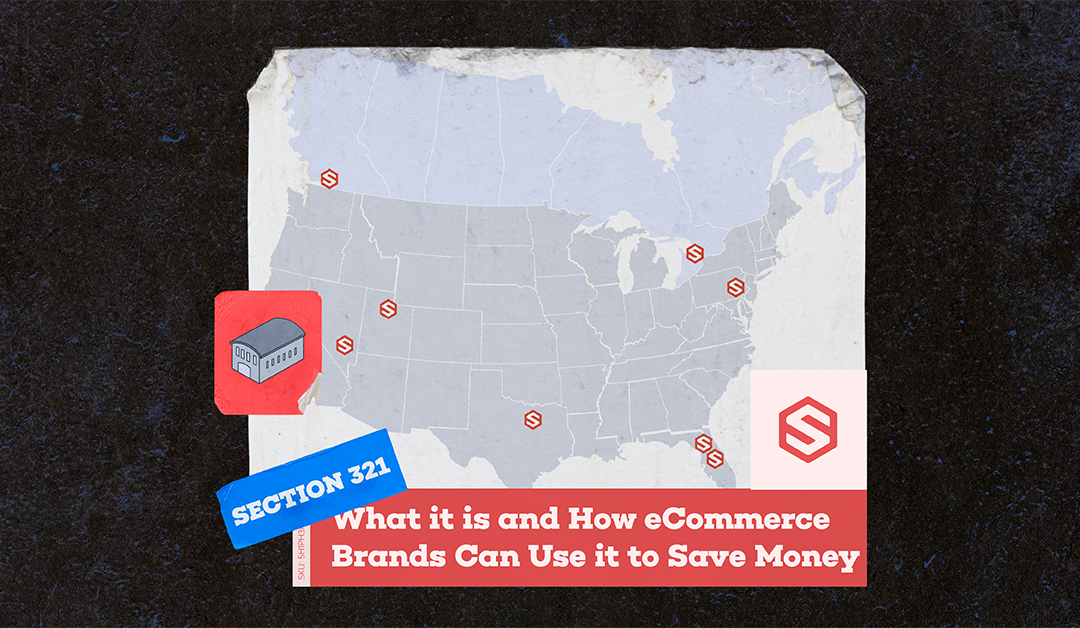
Aug 5, 2022 | Blog
As the cost of shipping continues to rise and supply chain issues persist, brands are hungry for ways to minimize expenses and offer a competitive edge that keeps customers happy.
For brands importing goods to the United States, the cost of shipping can be especially expensive. Different duties and taxes placed on products that cross international borders can quickly put a huge burden on small to medium sized eCommerce brands that are already struggling to keep prices low.
That’s why so many brands are taking advantage of a new law that cuts these costs entirely, while opening up new delivery strategies. That law is known as Section 321.
What is Section 321?
Section 321 is a law enacted by the US Customs and Border Protection that allows some products to be shipped from Canada to the U.S. duty free. For eCommerce brands, this offers a clear cost-cutting advantage, making it much more affordable to import goods to the U.S., even if those products originate from overseas markets like China.
What are the limits of Section 321?
Tax and duty free shipments sound appealing, but that special pricing won’t apply to every shipment across the board. Section 321 comes with a few parameters that brands need to meet in order to qualify.
Retail Value Threshold
While Section 321 sounds like a great opportunity to save major bucks on shipping, high-volume or high-value products likely won’t get the discount. The duty deferral only applies to products for $800 or less. Any more than that, and regular duties and taxes kick back in.
In addition to the price restrictions, some products are exempt from the advantages of Section 321. Certain chemicals that require a customs inspection, like cleaning supplies, are regulated differently. The same exemptions apply to products that fall under Countervailing or Anti-Dumping Duty laws.
Alcohol and tobacco products also won’t be able to apply for Section 321 declaration. In fact, any product regulated by certain government agencies, such as the FDA, USDA, or CPSA, are also outside the scope of Section 321.
Before you plan to cut costs under this regulation, be sure you have a clear understanding of your product’s retail price and whether they’re restricted by other laws.
Limited Shipment Amount
If your products are free and clear of additional restrictions, you still won’t be able to ship an unlimited amount of deliveries with duty deferrals. Section 321 caps the amount of shipments at one per day.
It’s important to maintain communication with your carrier or shipping partner to make sure they understand this limit. You could face substantial penalties if you or your carrier files multiple Section 321 claims on a single day.
How Section 321 Benefits Your eCommerce Brand
A brand that imports products from overseas and has them sent directly to the U.S. faces the typical hurdles of expensive duties and taxes. Canada, on the other hand, has more favorable trade relations with countries overseas, especially concerning imports from China, allowing their country to incentivize eCommerce shipping via Section 321.
It might seem like going through another international border would add time and expenses to an already overburdened supply chain. However, this regulation offers significant advantages for eCommerce brands that go beyond just the cost of shipping.
Quicker Deliveries
If you’re working with a fulfillment service provider in the U.S., coordinating your shipments so they go through Canada could actually result in faster delivery times.
Section 321 greatly reduces the amount of bureaucracy and paperwork required to transport items over the border. While you will still need to provide proof of value, the potential for delays is greatly reduced without the need to file taxes on every product you ship.
Minimizing Shipping Costs
The main reason so many brands are taking advantage of Section 321 is because of its potential to minimize the cost of shipping from Asian countries. For example, an item shipped from China to the U.S. might carry a substantial import tax, with that cost priced into what the customer pays when they make an order.
Under Section 321, as long as the shipment meets the regulated standards, that expense is 100% eliminated, resulting in a lower price tag and higher profit margins for your brand.
Competitive Advantage
The combination of the two advantages listed above result in a more satisfying customer experience overall. Online shoppers have come to expect quicker delivery times for a lower cost, and Section 321 can help your brand provide that level of quality.
If you’re launching a new product in the U.S., or looking to expand your customer base, leveraging the benefits of this regulation can give you a significant advantage over your competitors.
Conclusion
In the modern supply chain environment, with congested ports during a surge of online shopping, Section 321 offers a way to take some of the pressure off your brand. With this regulation working to your advantage, you could cut the cost of deliveries while guaranteeing your customers a shorter wait for their orders.
To find out more about Section 321, click HERE. To find out more about ShipHero’s fully outsourced fulfillment solution, talk to one of our Fulfillment Experts today.











